Identifying soybean reproductive growth stages
Key management decisions are made during the reproductive growth stages in soybean, so being able to identify each stage is critical.
Knowing the growth stage of a soybean crop is critical as several management practices and pesticide restrictions are based on crop stage. Use this summary to refresh your memory on how to identify reproductive growth stages and the key management practices associated with each stage. Note: A field is considered to have reached a given stage when at least 50% of plants exhibit the primary characteristic for that stage.
Thank you to Iowa State University Extension for allowing us to use their copyrighted photos in this guide.
R1 - Beginning flower

One flower on any node on the main stem, typically starting on nodes 3-6 and progressing upward and downward; rapid vertical root growth begins; new flowers form until early R5
- Apply white mold fungicide to protect flowers.
- Scout for soybean aphids. Refer to Michigan State University (MSU) and Ohio State University (OSU) field crops insect guide for considerations and thresholds.
- Last stage to apply dicamba products on Xtend soybeans; glufosinate on LibertyLink beans must be applied prior to R1.
- Irrigation during R1–R2 not advised unless necessary to reduce risk of white mold.
R2 - Full flowering
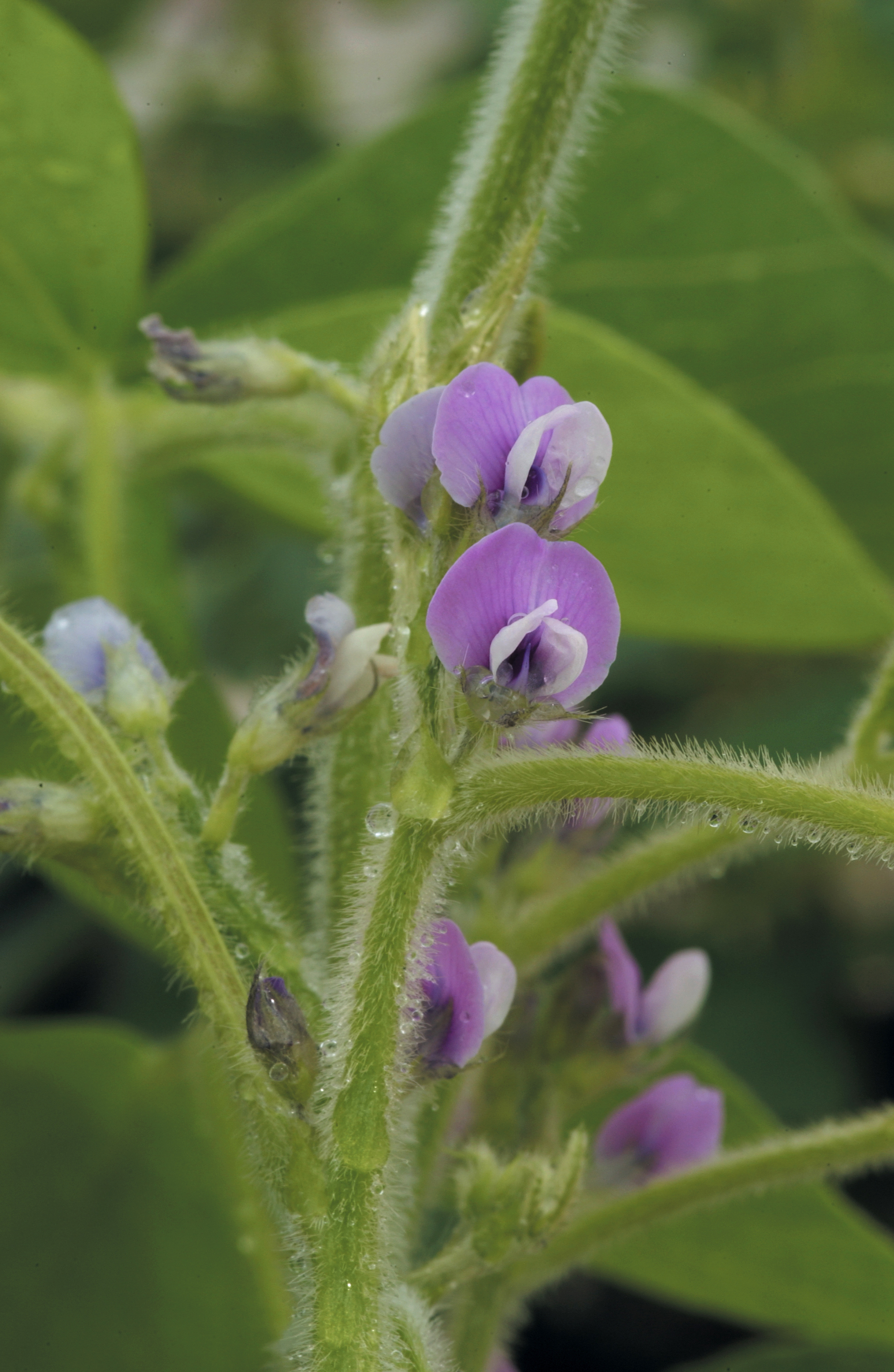
One open flower on one of the two uppermost nodes with a fully developed leaf (unfurled, edges no longer touching) on the main stem; pods beginning to form on lower nodes; plants have achieved about 50% of full height and 25% of final dry weight
- Apply white mold fungicide if not previously applied.
- Last stage to apply glyphosate—refer to the MSU Weed Guide for questions on individual products.
- Conduct mid-season tissue sampling to monitor nutrient status by collecting topmost fully developed trifoliate from several plants, minus the petiole.
- Continue scouting for insect damage.
R3 - Beginning pod
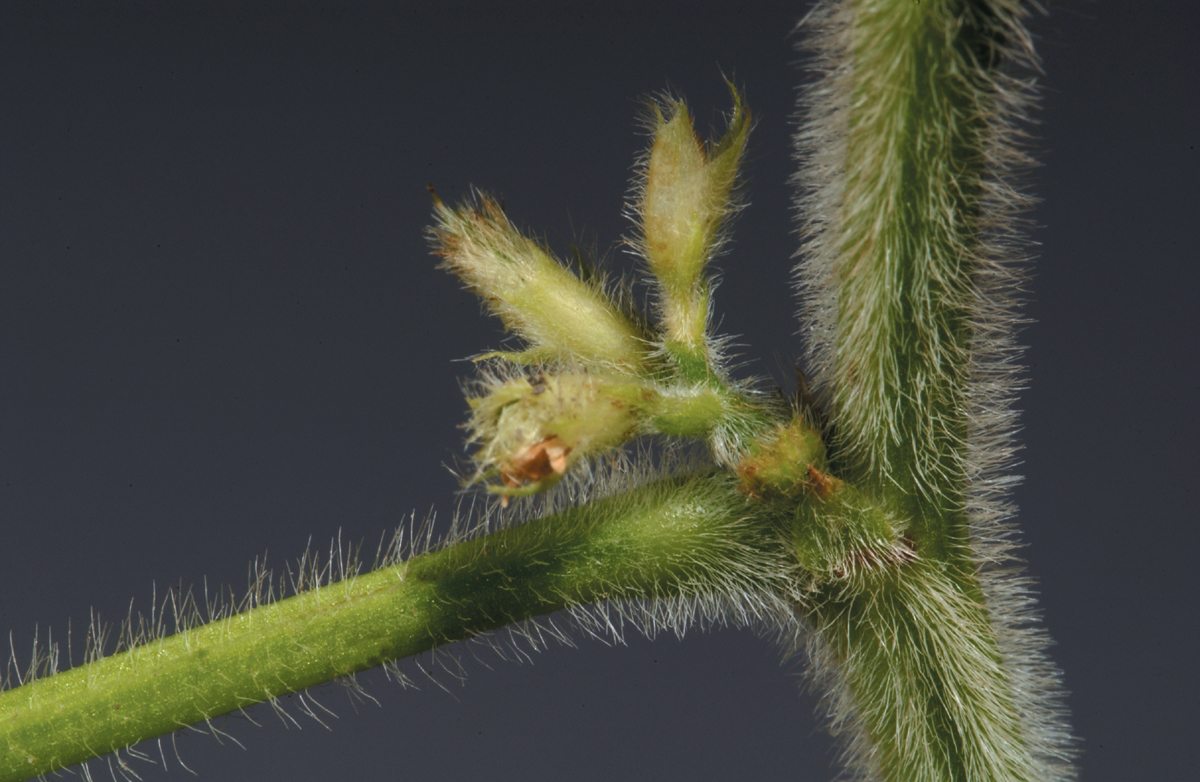
One pod 3/16-inch on any of the four uppermost nodes with a fully developed leaf on the main stem; number of pods determined during R3–R4.
- Scout for diseases and insect feeding, apply pesticide if needed. Check the Fungicide Efficacy Chart from Crop Protection Network for pre-harvest interval restrictions.
- Begin irrigating; crop experiences peak water use R3–R6.
R4 - Full pod
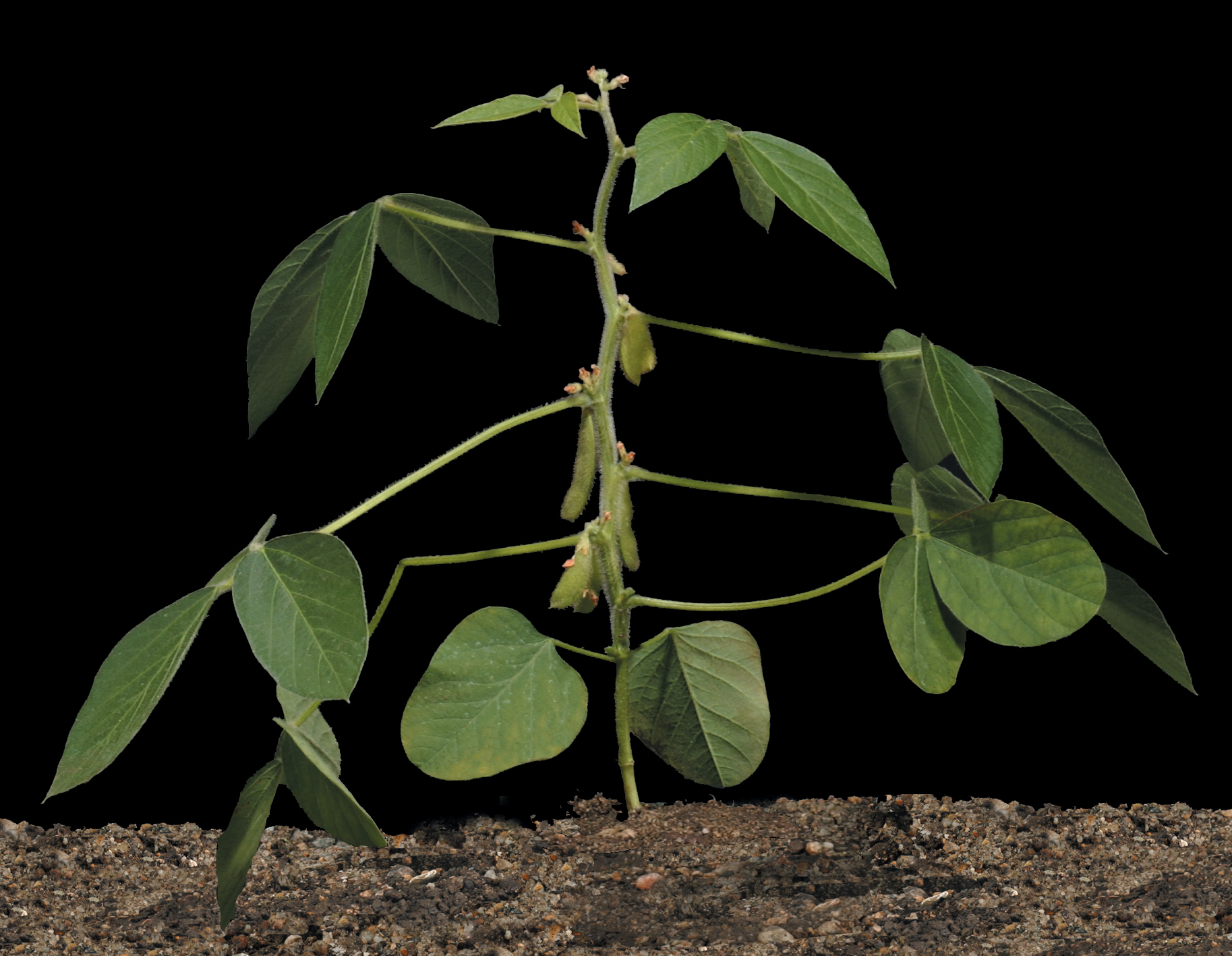
One pod 3/4-inch on any of the four uppermost nodes with a fully developed leaf on the main stem; stress from R4–R6 will result in the most yield loss.
- Continue scouting for insects and diseases.
R5 - Beginning seed
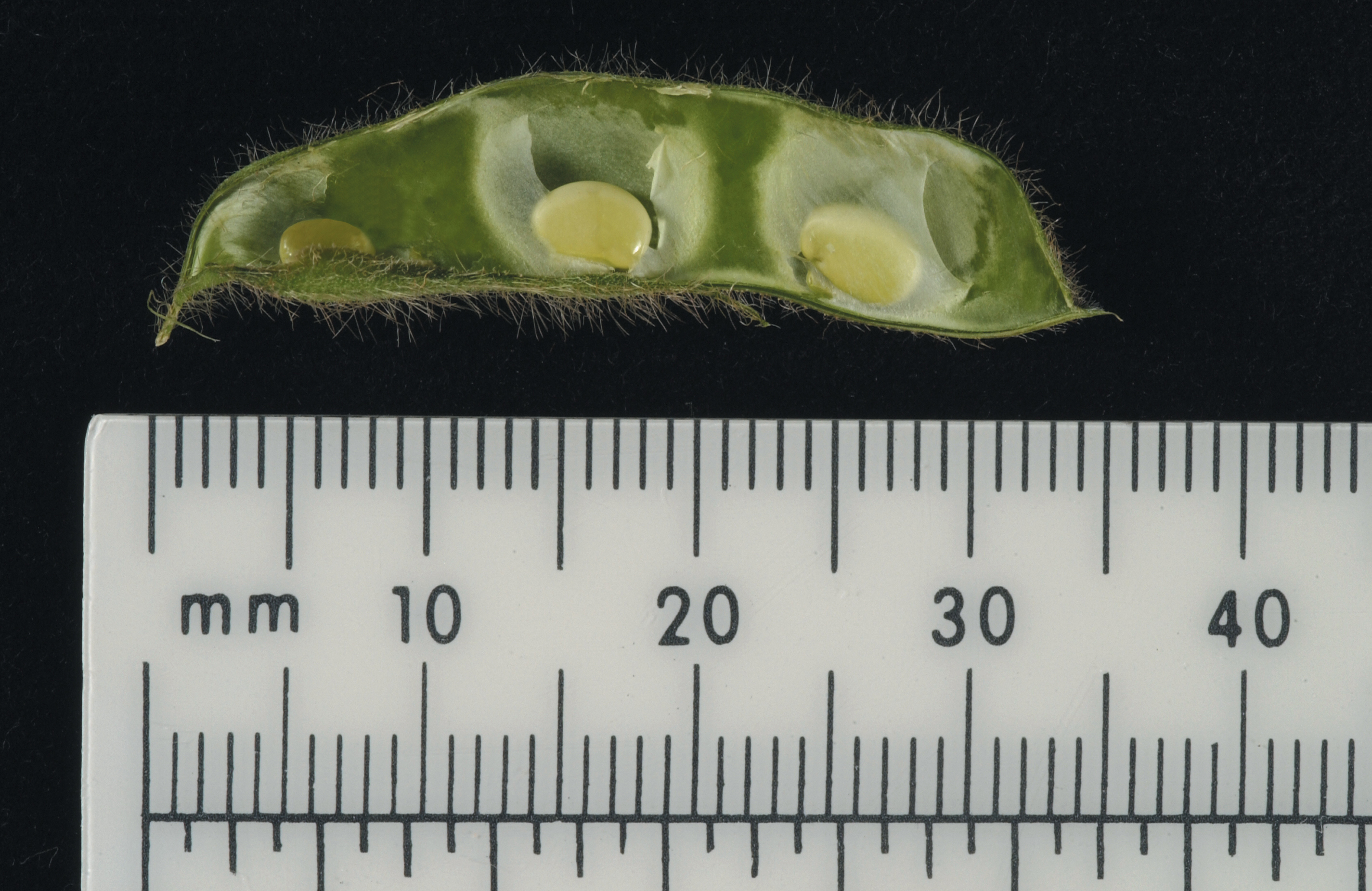
Seed is 1/8-inch on any of the four uppermost nodes with a fully developed leaf on the main stem; plants attain maximum height, node number and leaf area; nodulation maximized at R5.5, after which nodules begin to die; seed size determined during R5.5–6.5.
- Last stage to spray for soybean aphid if necessary.
- Continue scouting for insects and diseases.
R6 - Full seed
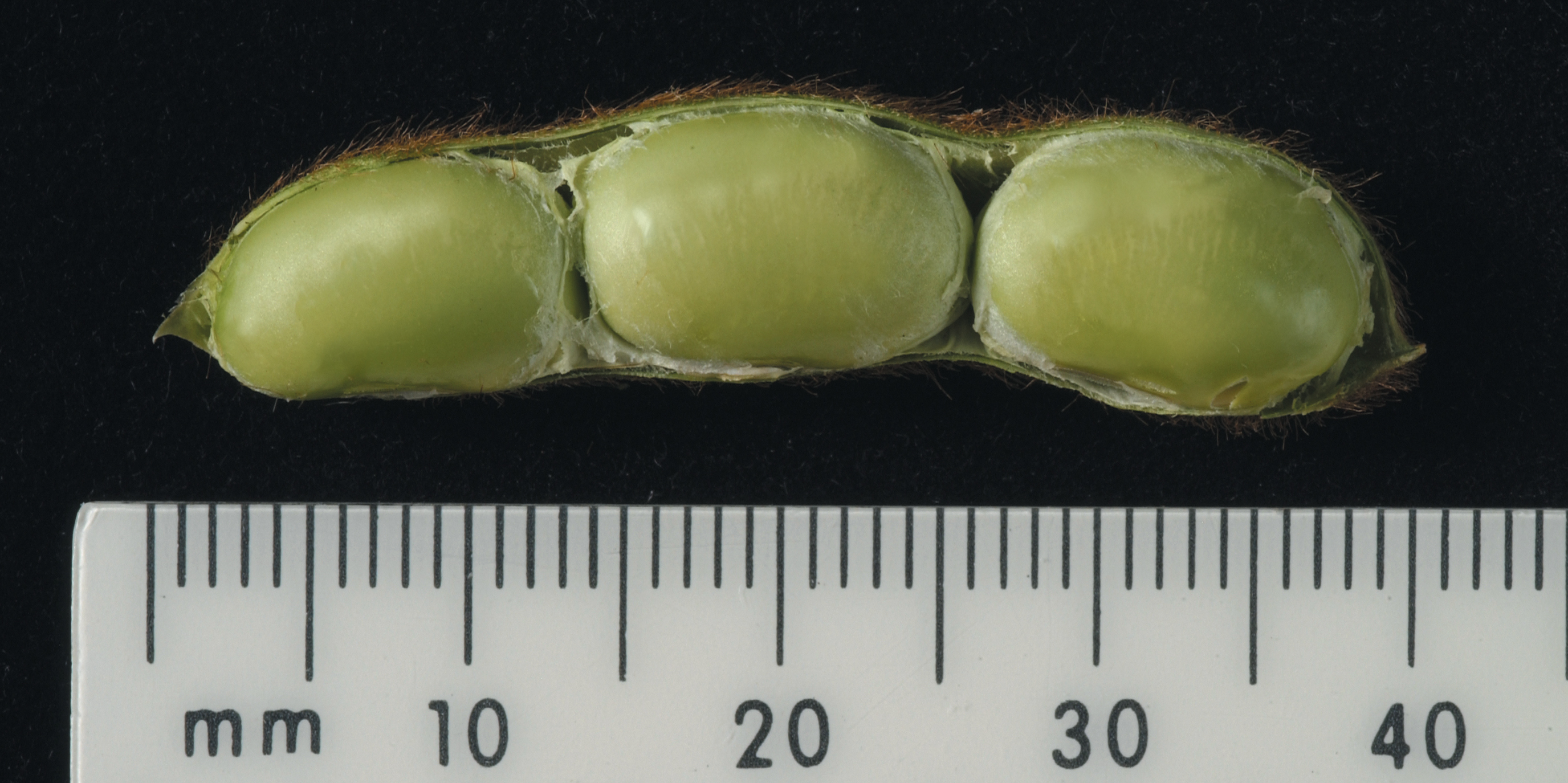
Green seeds fill pod cavity on any of the four uppermost nodes with a fully developed leaf on the main stem; pod weight peaks; most nutrients taken up by R6.5; leaves on lower nodes begin yellowing; protective membrane pulls away from seed at end of R6, analogous to black layer in corn, signifying physiological maturity.
- Continue scouting for insects and diseases.
- Fungicides not recommended after R6.
R7 - Beginning maturity
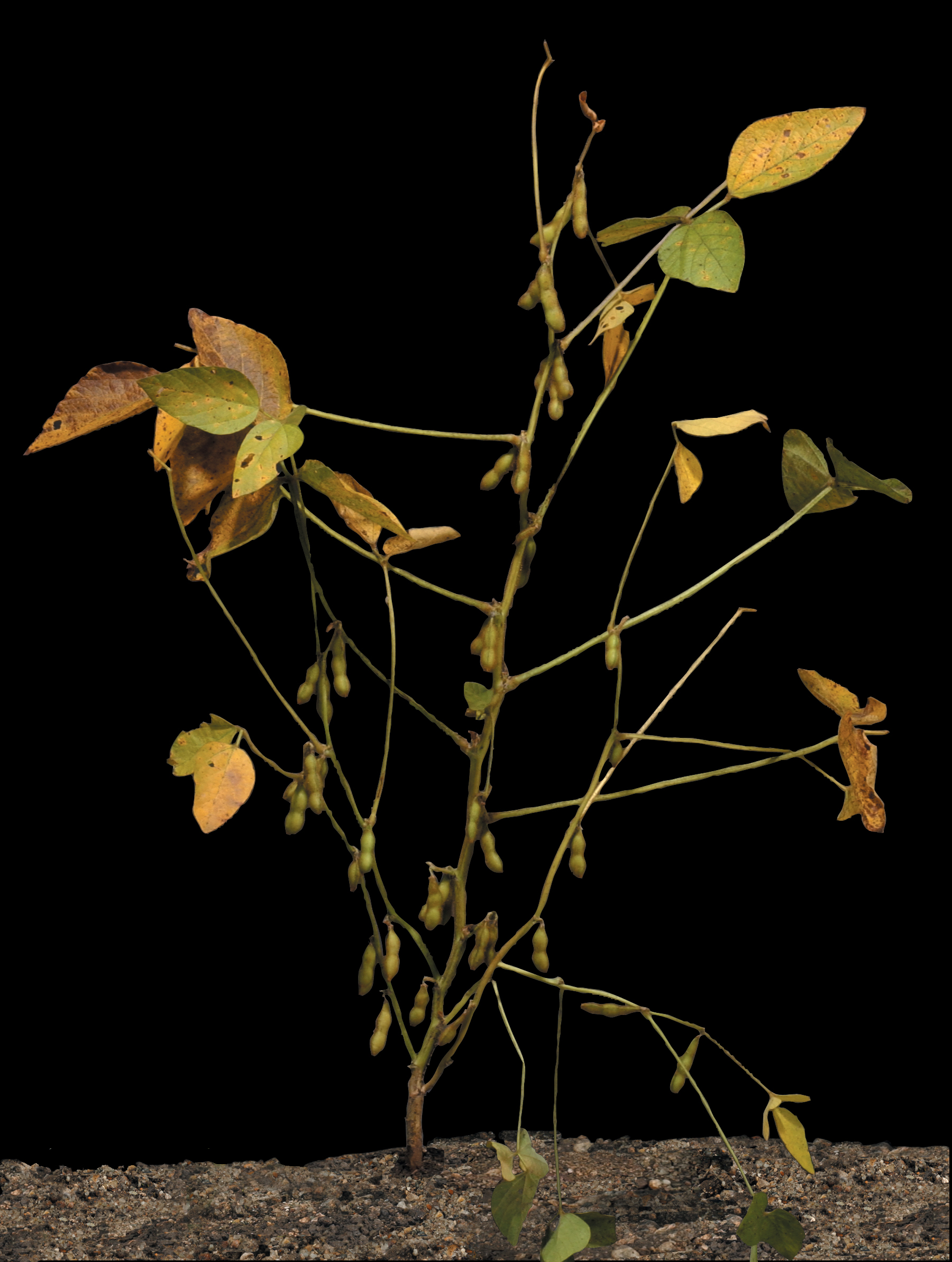
One pod anywhere on the plant has reached mature pod color; seed dry matter peaks; leaf yellowing increases and may begin dropping by the end of this stage; seeds at 60% moisture; frost injury from now will have minimal impact on yield.
- Cease irrigating when 50% of leaves have turned yellow.
- Scout for green stem, lodging and other issues that could impact harvest.
R8 - Full maturity
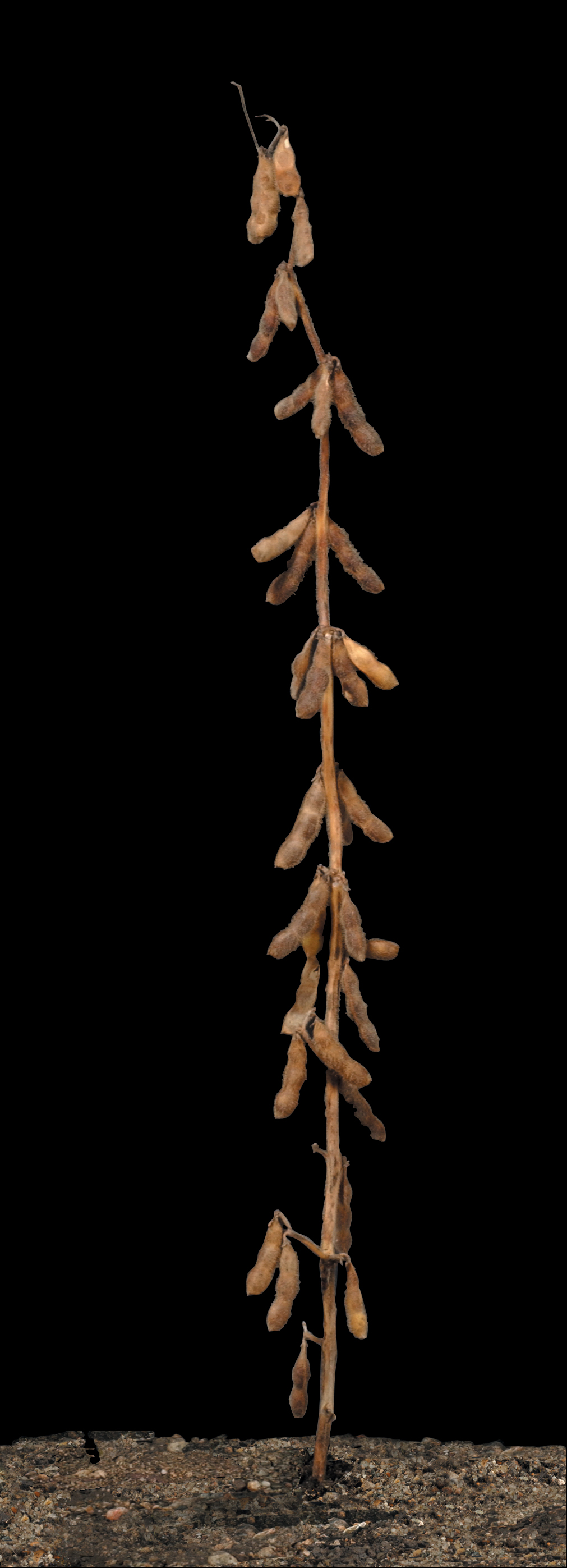
Ninety-five percent of pods have reached mature color.
- Once R8 is reached, harvest can typically occur after five to 10 days of good drying weather.
- Begin harvest at 13–15% moisture.
- If stems are green, delay harvest if possible.
- Consider collecting soil samples for soybean cyst nematode, testing paid for by Michigan Soybean Checkoff.
This article was originally published in the Michigan Soybean On-Farm Research In-Season Management Guide.



 Print
Print Email
Email




